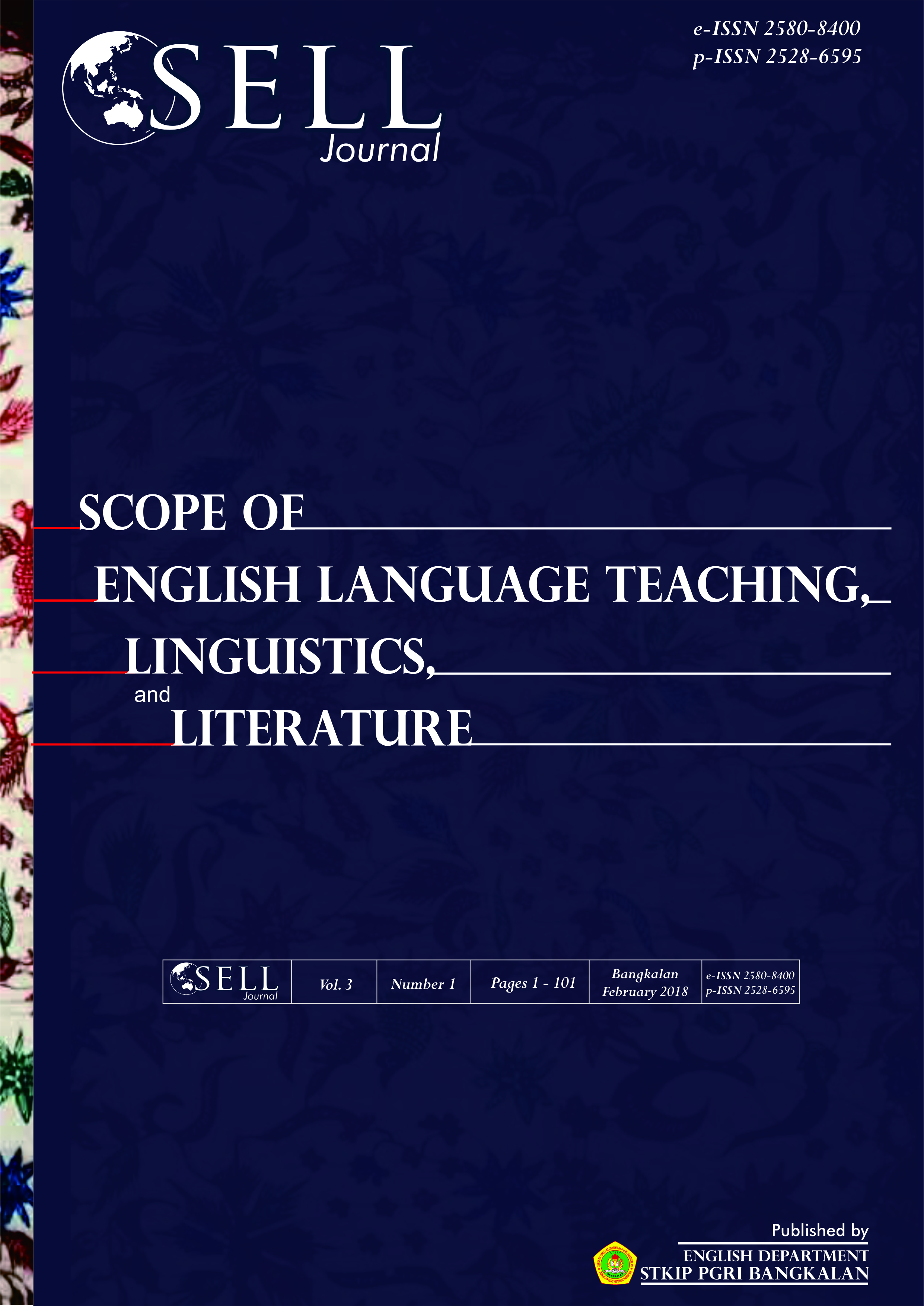The Effectiveness of Quick on the Draw Technique in Teaching Reading Recount Text
DOI:
https://doi.org/10.31597/sl.v3i1.534Keywords:
Quick on the Draw, Teaching Reading, Recount Text, AncovaAbstract
Reading is crucial learning activity which mostly makes students bored. To build interactive activity, Quick on the Draw (QOTD) is useful technique that group working is the prior aspect should be done by the students. So that, the researcher interested to investigate whether the students taught by using QOTD have better achievement in reading recount text than the students taught by conventional technique in SMP Negeri 2 Megaluh. This research used quasi experimental design especially nonequivalent control group design which experimental and control group are included. By giving the same pre-test and post-test and different teaching learning process, the research data was collected. The data was analyzed by using ANCOVA SPSS 16.0. By calculating the post-test for both control and experimental group, it was gained F value 6.009. It was meant 6.009 >4.03, the F value is greater than F critical value. And the significance value was 0.018 which is lower than the significance level, 0.018 < 0.05. It could be concluded that Quick on the Draw is effective in teaching reading recount text at the eight students of SMP Negeri 2 Megaluh and the Hypothesis Alternative (Ha) was accepted.
References
Arikunto, Suharsimi. (2002). Prosedur Penelitian: Suatu Pendekatan Praktek. Jakarta: Rineka Cipta.
Brown, H Douglas. (2003). Language Assessement: Principles and Classroom Practices. San Fransisco: Longman.
Chasanah, Miftachul. (2012). The Effectiveness Teaching Reading by Using Team Teaching for the Eight Year of MTs Salafiyah Mojogeneng Jatirejo Mojokerto in Academic Year 2011/2012. Jombang: STKIP (Unpublished Thesis)
Fachrurrazy. (2012). Teaching English as a Foreign Language for Teachers in Indonesia. Malang: State University of Malang Press.
Fiderer, Adele. (2012). Performance Assessement for Reading. From www.teacher.scholastic.com/professional/assesssement/readingassess.htm retrieved at 5th December, 2015.
Grabe, William & Stoller, Fredrica L. (2002). Teaching and Researching Reading. London: Pearson Education Longman.
Harmer, Jeremy. (2007). How to Teach English New Edition. Longman: Pearson
Larson, Jenifer. (2010). A Guide to Doing Statistics in Second Language Research Using SPSS. New York: Routledge
Pallant, Julie. (2005). SPSS Survival Manual: A step by step guide to data analysis using SPSS for Windows (Version 12). Sydney: Allen & Unwin.
Syahrir, Anshar. (2012). Model Pembelajaran Kooperatif Tipe Quick on the Draw (Online). from www.ansharsyahrir.blogspot.com/2012/12/model pembelajaran-kooperatif-tipe.html retrieved on 25th October 2014.
Downloads
Published
How to Cite
Issue
Section
License
1. Copyright of this journal is possession of Editorial Board and Journal Manager, by the knowledge of author, whilst the moral right of the publication belongs to the author.
2. Legal formal aspect of journal publication accessibility refers to Creative Commons Atribution-ShareAlike (CC BY-SA), implies that this license lets others remix, adapt, and build upon your work even for commercial purposes, as long as they credit you and license their new creations under the identical terms. This license is often compared to “copyleft” free and open source software licenses.
3. Every publications (printed/electronic) are open access for educational purposes, research, and library. Other that the aims mentioned above, editorial board is not responsible for copyright violation















